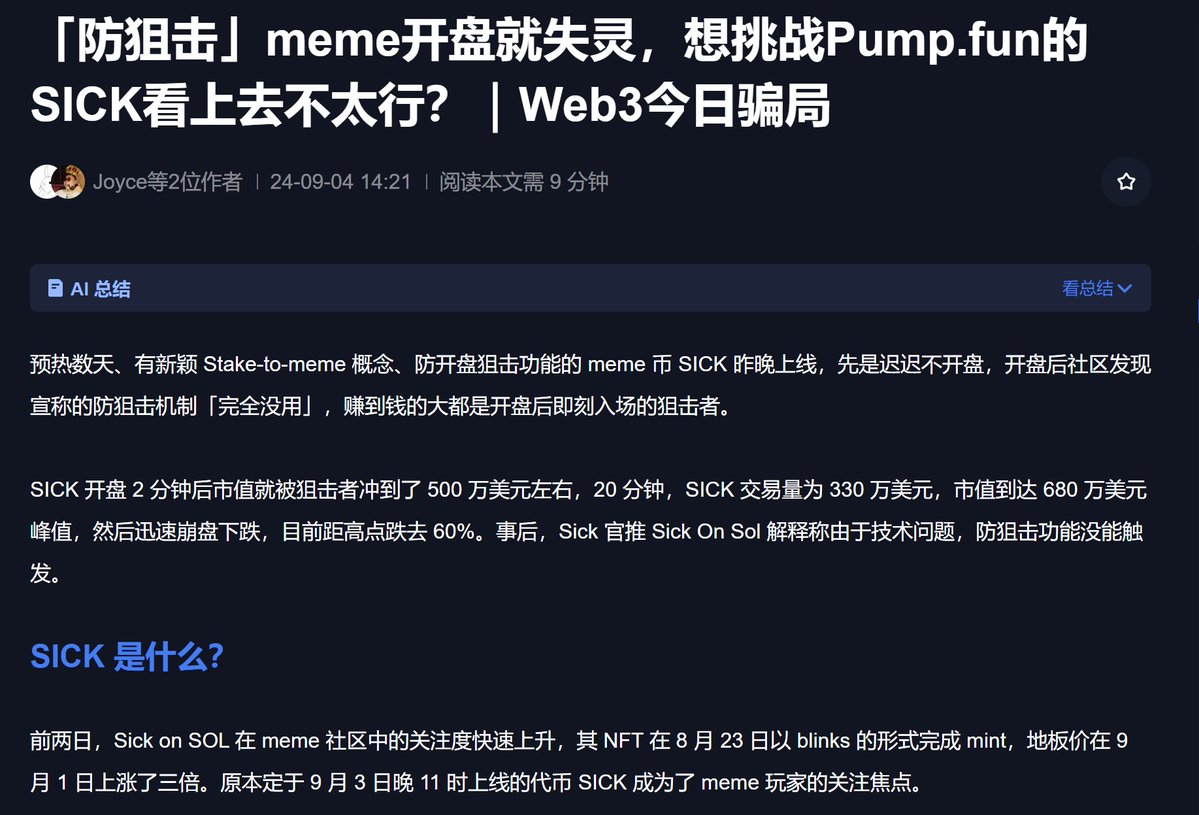Yesterday, the crash of $SICK was actually unexpected but reasonable. The main reason, in my opinion, is the lack of understanding of team operations and on-chain liquidity, rather than any issue with anti-sniping.
Where did $SICK go wrong?
- Fundraising through NFT and logging into ME: Charging for minting NFTs was intended to raise LP for $SICK, and the design of the crowdfunding pool was originally meant to prevent a large chip distribution gap and to discourage early participants from selling to later entrants (this is a common problem in almost all current launch methods).
Although 100% of the funds were indeed injected into LP, each SICK NFT only corresponds to 0.1 SOL of $SICK pool rights on ME, effectively creating a price difference for the NFTs. This means that those who minted NFTs as LP investors did not benefit from the pool (at least break even), while those with NFTs suffered losses worse than those who participated in the previous private sale.
Starting with a 1000+SOL pool for the first project: From the candlestick chart, it is evident that $SICK did not involve market makers, and its trajectory is a standard fair launch trend. As Moonke's first project, the goal should have been multiples rather than scale. Directly starting with 1000 SOL is equivalent to requiring an initial LP of 260,000 U, and the pool would need to increase by 5 times for NFT holders to unlock profits, equivalent to an FDV of 6.5 million and a net inflow of 1 million U. In the current environment, this is very challenging for a new model and platform.
Inadequate understanding of the liquidity model being used: If unlocking 20% of the total liquidity requires the LP to increase by 5x, it means that the pool will initially have 20% less SOL and an equivalent amount of token selling pressure will be added.
At this point, since 20% of SOL has been withdrawn, this portion of the tokens is equivalent to 25% of the total SOL pool at that time. In other words, when this withdrawal occurs, there will be selling pressure equivalent to 45% of the current total circulating value, not including the 1% token reward for the creator. This selling pressure can basically crush the price trend and make it impossible to conduct CTO.
The real logic of this model is to differentiate between primary and secondary participants in a dog race, providing risk-free limited returns for primary LP investors and ceding additional profit space to secondary rushers, forming a three-stage lifecycle of asset liquidity starting from 0: initial liquidity - price discovery at opening - CTO game after initial liquidity exit.
It is obvious that the team did not understand the intention of the liquidity model proposer, "the intention is good, but the execution below is crooked."
Finally, this is a point that innovative teams in the liquidity model during this period need to be aware of: do not waste your show in front of a large audience. It is better to keep a low profile in a low liquidity market than to publicly embarrass yourself.
Original article link: https://shorturl.at/zAL5x

免责声明:本文章仅代表作者个人观点,不代表本平台的立场和观点。本文章仅供信息分享,不构成对任何人的任何投资建议。用户与作者之间的任何争议,与本平台无关。如网页中刊载的文章或图片涉及侵权,请提供相关的权利证明和身份证明发送邮件到support@aicoin.com,本平台相关工作人员将会进行核查。




